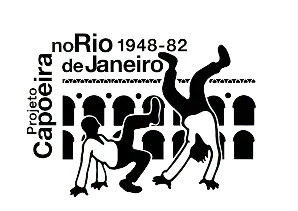By Celso de Brito.
Encounters and mismatches
Among the local representatives of the main lineages are Mestre Albino from Piauí, leader and founder of the Escravos Brancos Capoeira Group, who migrated to São Bernardo do Campo – SP in the early 1970s, where he learnt capoeira from mestre Zé da Volks. The brothers and mestres Bobby, Chocolate and Tucano joined John Grandão to represent the former Senzala Piauí Group and, later, Abadá Piauí, under the general coordination of Mestre Camisa. With the exception of Mestre Albino, all the other mestres from Piauí are now in different groups.
The federations
Municipal elections and capoeirista candidates
In recent years, capoeira in Teresina has sought to elect a capoeirista as a city councillor, with the argument that the number of capoeiristas in the city would be large enough for the election, and that all that would be needed would be the mobilisation of the community around a “single candidacy” under the slogan “capo-eirista votes for capoeirista!”. However, in addition to the fact that there is no evidence that there are 1,500 capoei-ristas voting in the city, both the FPC and FECAPI presented their own candidacies, halving their chances of success in the 2020 elections.(1)
In recent years, capoeira in Teresina has sought to elect a capoeirista as a city councillor, with the argument that the number of capoeiristas in the city would be large enough for the election, and that all that would be needed would be the mobilisation of the community around a “single candidacy” under the slogan “capo-eirista votes for capoeirista!”. However, in addition to the fact that there is no evidence that there are 1,500 capoei-ristas voting in the city, both the FPC and FECAPI presented their own candidacies, halving their chances of success in the 2020 elections.1
The FPC supported Marcelo Capoeira (PSD), Mestre Albino’s former disciple in the Escravos Brancos Group, who won 581 votes. FECAPI supported the collective slate Capoeira e Periferia (PCdoB), made up almost entirely of its members: Contramestre Boquinha, Mestre Kunta, Mestre Parafuso and Dj Laís, which won 108 votes.
More interesting than the result of the vote itself is the segmented dynamic of the candidacies, which corresponds to the differences between the two main lineages representing the two state capoeira federations
The challenge that transcends the local community
The bureaucratisation of capoeira in Teresina in the form of federations is seen as inherent to the practice itself, but insufficient to guarantee the rights of capoeiristas, which motivates party political action and the search for representation in the city council.
There is a challenge here that arises from the contradiction between a force that tends to separate and guarantee the diversity of capoeira and another force that seeks to aggregate and strengthen the community as a whole.
Unfortunately, after many attempts to unify the overall community, the capoeiristas of Teresina continue to reproduce, in the bureaucratic and political spheres, the differences that exist in the field of lineages. This is also what we see happening on a national scale, with the creation of the Brazilian Capoeira Party (PBC). The intention of the mestres involved was to bring together the national community and elect some deputies who would actually represent capoeira in Congress. However, before they even managed to register with the Superior Electoral Court (TSE), the PBC split and an opposition party, the National Capoeira Party (PNC), emerged. Both continue with the arduous work of gathering state delegations (now divided) to get the parties registered with the TSE. This is the challenge for capoeiristas in Teresina, Brazil and perhaps the world: How to maintain the richness of capoeira with its own lineages, traditions, styles and ideologies, while at the same time creating political bridges that strengthen the community as a whole? Because if there are many differences, there must be many points of convergence!
Celso de Brito holds a PhD in Social Anthropology from the Federal University of Rio Grande do Sul (UFRGS). He is now Assistant Professor in the Department of Social Sciences of the Federal University of Piauí (UFPI) and teaches on the Graduate Anthropology Programme. He has been a capoeira teacher since 2018, being responsible for the Grupo de Capoeira Angola Zimba in Teresina, Piauí.

Read the full article (in Portuguese) here:
BRITO, Celso de; SILVA, Robson Carlos da. A capoeira teresinense: linhagens, federações e suas posições no espectro político. Revista Entrerios, vol. 4, n. 2, p. 60-97, (2021). Disponível em: https://revistas.ufpi.br/index.php/entrerios/article/view/12938/8235. Acessado em jun. 2023.










